From Excel
Warning
Zephyr 7.2 and later does not support import from Excel. Save your Excel sheet to a CSV file and see Import Test Cases From CSV for details. The information below about importing from Excel sheets applies to earlier Zephyr versions.
You can import Excel files (.xlsx) directly into Zephyr using a wizard.
If your data is in the Numbers spreadsheet program on a Mac OS, no worries! Just export to XLS before you proceed with the import process.
Having issues? Creating an Excel spreadsheet from scratch? Download the Sample1.xlsx template, which includes the suggested formatting.
Before you import: format your Excel spreadsheet
To import and allow you to map your fields and data accurately, the Excel spreadsheet you use to import your test-case information needs to abide by a few formatting specifications.
Define your test steps
There are two ways you can format your test steps. Choose one.
Option 1
You can import the script type (Steps) by creating a column for Step and another column for the Expected Result, as demonstrated in the following example:
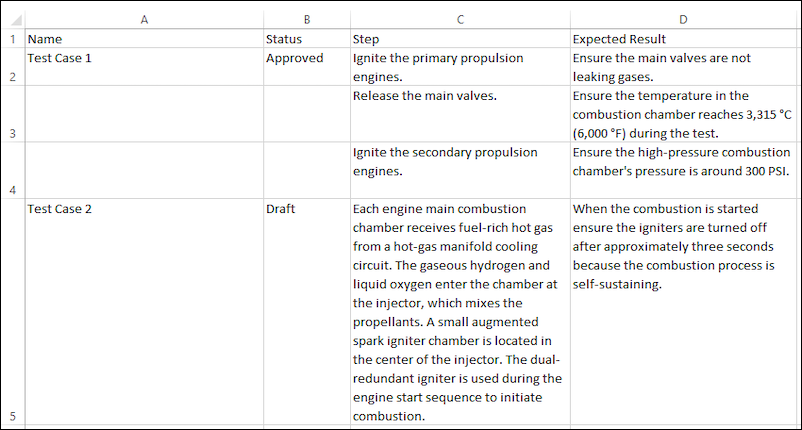
Option 2
You can import the script type (Plain Text) by creating a column for Test Script Plain Text, as demonstrated in the following example:
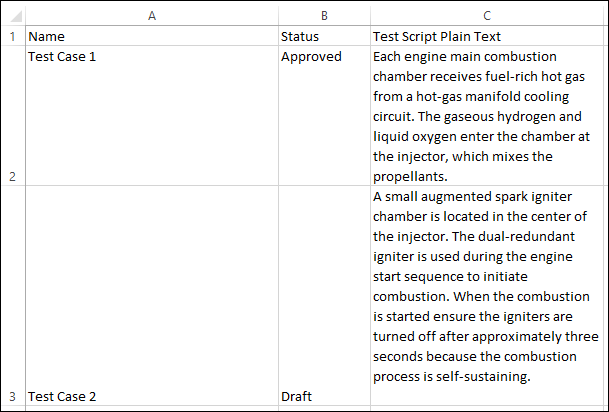
Import limitations
A few limitations to keep in mind:
Importing data from Microsoft Excel does not calculate/evaluate formulas.
Only the first (left-most) worksheet tab of an Excel workbook will be imported (e.g. Sheet1).
Excel time cells will not import and must manually be changed to text format.
System fields available for import
This table lists all of the system fields that are importable via Excel file.
System Field | Description |
|---|---|
Name | Text field, single line. The Name field is required. Example: Validate mandatory fields. |
Precondition | Text field, multi-line. May contain line breaks. Example: Leaves fields in blank to verify if a user can advance without filling mandatory fields. |
Objective | Text field, multi-line. Can contain line breaks. Example: Ensure the user is unable to proceed without filling mandatory fields. |
Test Script (Steps) - Step | Text field, multi-line. Can contain line breaks. Should not be used if the Test Script (Plain Text) field has been mapped. Example: Leave username field blank and attempt to proceed further. |
Test Script (Steps) - Expected Result | Text field, multi-line. Can contain line breaks. Should not be used if the Test Script (Plain Text) field has been mapped. Example: User is unable to proceed further. The page warns about a mandatory field. |
Test Script (Plain Text) | Text field, single line. Should not be used if any Test Script (Steps) field has been mapped. Example: The content of the error message should be "field user name is mandatory." |
Folder | Folder structure separated by a slash (/). Example: "folder 1/folder 2" or "/folder 1/folder 2" (same effect for both options). Non-existing folders will be created. Folders that match existing ones (including all path) will be merged. |
Status | Name or short sentence describing the value. A value-mapping step will be available for such fields. Example: Draft, Approved, In Review, etc. |
Priority | Name or short sentence describing the value. A value-mapping step will be available for such fields. Example: Low, Medium, High, etc. |
Component | Name or short sentence describing the value. A value-mapping step will be available for such fields. The component field is the same component used by the Jira project. Example: Manufacturing |
Labels | Name or short sentence describing the value. A value-mapping step will be available for such fields. Example: Functional, Non-Functional, Smoke, Integration, etc. |
Owner | The key of existing Jira users. If the user doesn’t exist, it will not be imported and a warning will be generated. Example: ccaetano, jbond, etc. |
Estimated Time | The estimated time in seconds or using format hh:mm. If the value can’t be parsed, it will not be imported and a warning will be generated. Example: 00:40 or just 2400 (seconds) |
Coverage | An issue key list separated by a comma. If an issue doesn’t exist for a given key, it will not be imported and a warning will be generated. Example: TIS-490, WOR-356, etc. |
Importing your data to Zephyr
The Import from File wizard appears.
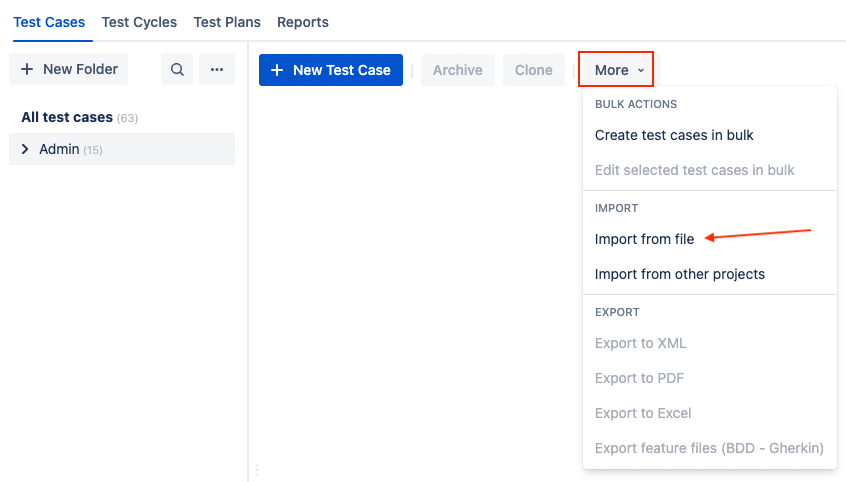
Click Microsoft Excel. The wizard progresses to the Setup stage.
Upload your Excel (.xlsx) file by dragging and dropping it into the defined area or by clicking Choose the File and selecting it from your local storage. Your file uploads to the wizard.
Complete the fields in the Settings section.
Destination Folder - The folder into which you want to import your test cases. If a folder for your file does not exist in Zephyr, one will be created during the import process.
Date Format (two fields) - The format your test cases use, including the separator (slash, dash, or dot).
Start Import at Row - The row in which you want the import to begin.
Note
The This row contains the field names checkbox is selected by default. Deselect this option if the row specified does not contain field names.
Click Next.
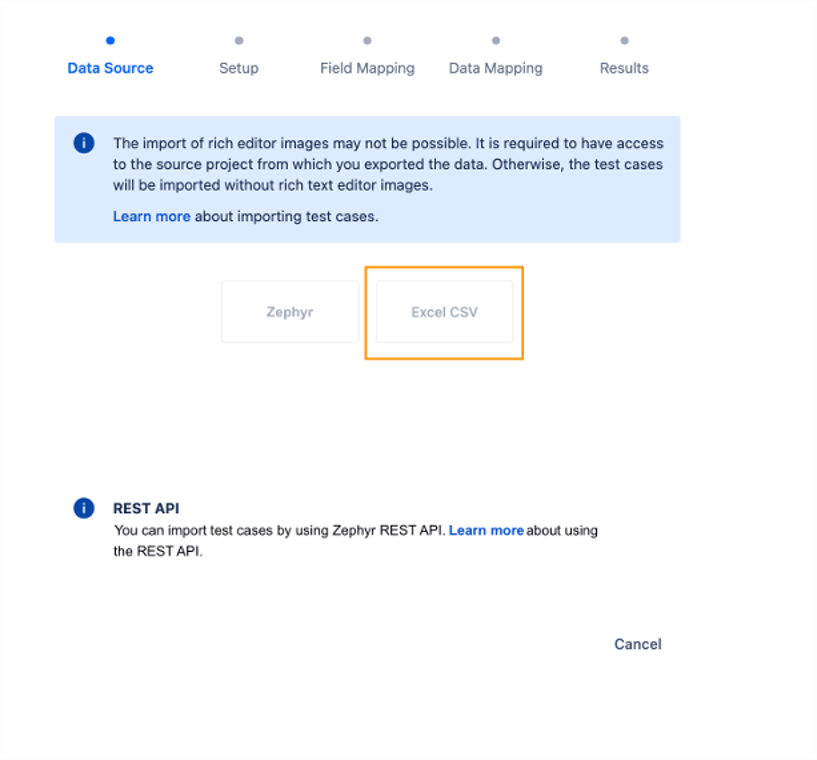
The wizard progresses to the Field Mapping stage.
Map your fields, then click Next. Unmapped fields will not be created. Map your fields, then click Next. Unmapped fields will not be created.
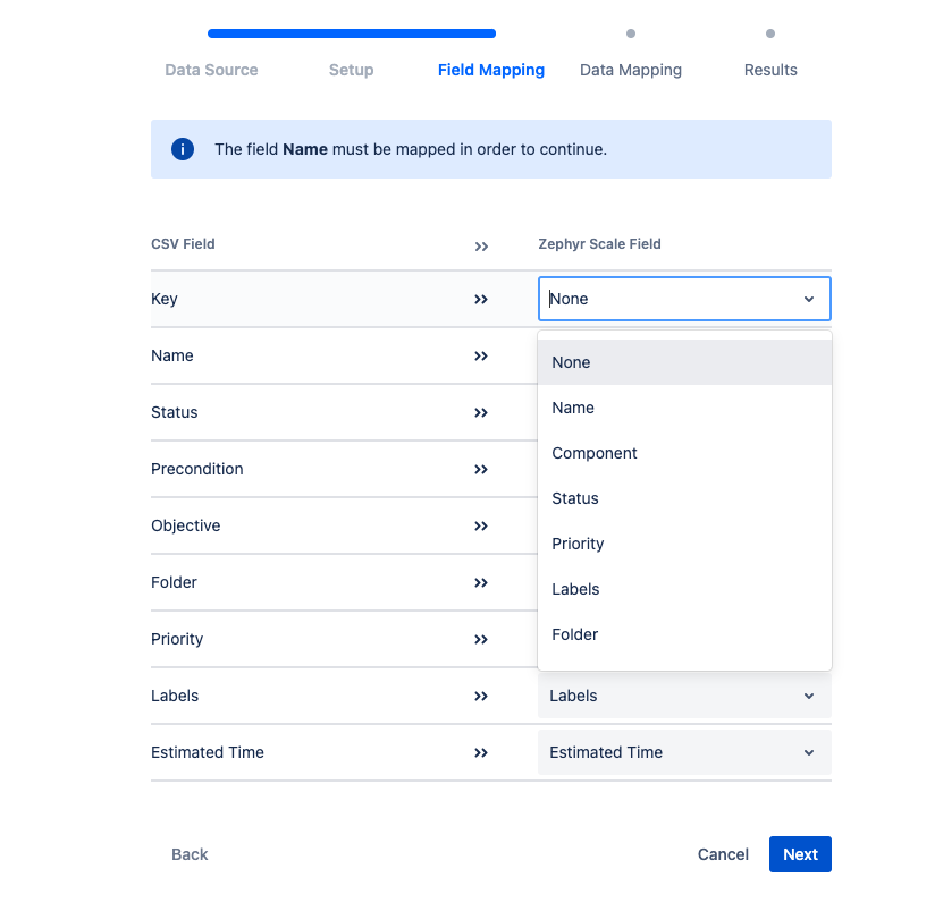
Map your data type for components, priorities, statuses, labels, etc. A message appears if there is no data to map. Note the option to automatically create unmapped labels.

Click Import. Your test case information imports to Zephyr. The wizard advances to the Results stage, where import messages and errors appear.